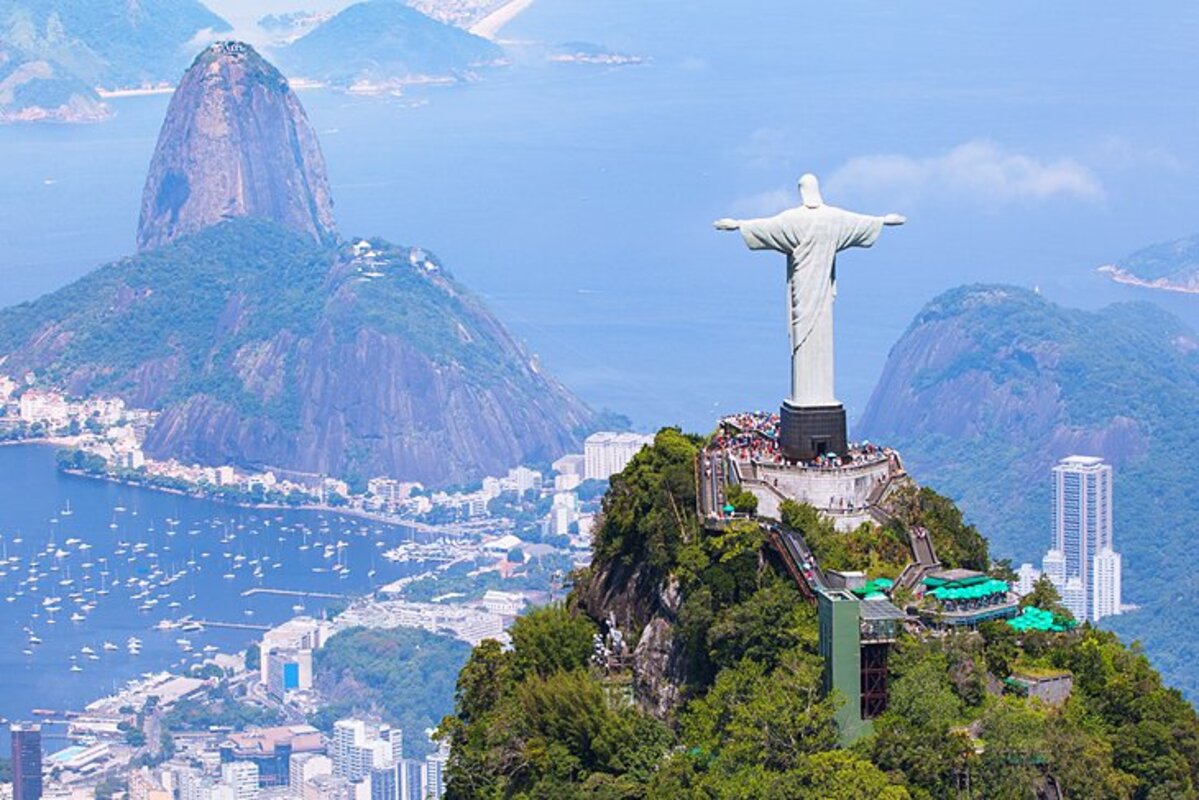Rio de Janeiro is one of the most iconic cities in the world, famous for its beauty, energy, and striking contrasts. It is a place of beaches, mountains, carnivals, and breathtaking landscapes that attract millions of tourists every year. Rio is not only a tourist gem but also a cultural, historical, and social hub of Brazil. Every street, hill, and coastline holds stories, traditions, and unique character. Here is a collection of fascinating facts that reveal what makes this vibrant city so extraordinary.
- The name Rio de Janeiro translates from Portuguese as “January River.” Portuguese explorers arrived at the bay on January 1, 1502, and mistakenly believed it was the mouth of a large river. Since then, the name has remained. In reality, there is no major river in the area.
- In 1763, Rio became the capital of colonial Brazil, replacing the city of Salvador. It retained this status even after the country gained independence, until 1960 when the capital was moved to Brasília. This means Rio served as Brazil’s political and administrative center for over 200 years. Despite losing its capital status, the city maintained its national importance and influence.
- Rio de Janeiro is the only city outside Europe where a royal family officially resided. In 1808, Portuguese King João VI fled Napoleon’s army and settled in Rio. For a period of time, the city served as the capital of the Portuguese Empire. This was a rare occurrence in the history of monarchies.
- The Christ the Redeemer statue on Corcovado Mountain is one of the most recognizable landmarks in Brazil. It stands 30 meters tall with an arm span of 28 meters. Completed in 1931, the statue has become a popular pilgrimage and tourist destination. It is listed among the New Seven Wonders of the World.
- Rio is famous for hosting one of the largest carnivals in the world, which takes place annually before Lent. This vibrant celebration lasts several days and includes samba school parades, street parties, costumes, and musical performances. Hundreds of thousands of participants and even more spectators join the festivities. The Rio Carnival is one of the largest mass events on Earth.
- One of the city’s most famous beaches is Copacabana, stretching over four kilometers. The beach is surrounded by hotels, cafes, and entertainment venues and often serves as a site for festivals, concerts, and sporting events. It hosted several competitions during the 2016 Olympic Games. Copacabana is a symbol of Rio’s tourism scene.
- Rio is home to one of the largest urban forests in the world — the Tijuca National Park. This tropical forest, covering more than 30 square kilometers, was reforested by hand after deforestation in the 19th century. It hosts numerous species of animals and birds and is a popular site for hiking and ecotourism. Its peaks offer spectacular views of the city.
- Sugarloaf Mountain is another iconic feature of Rio, rising at the entrance to Guanabara Bay. It reaches a height of 396 meters and is accessed via a cable car. The site has become a must-visit attraction. From the summit, visitors can enjoy stunning views of the ocean and cityscape.
- Rio de Janeiro has a vast network of favelas — informal settlements built on hillsides. Despite challenging social conditions, some of these areas have become centers of cultural expression, street art, and alternative tourism. Many famous musicians, dancers, and athletes come from favelas. They have become an integral part of the city’s identity.
- In 2016, Rio became the first South American city to host the Summer Olympic Games. Preparations included major infrastructure upgrades, the construction of new stadiums, and improved transport networks. The Olympics marked a significant moment in the city’s history. The event attracted millions of viewers from around the world.
- The city operates one of the oldest tram lines in the world — the Bonde, connecting downtown Rio with the Santa Teresa neighborhood. This historic mode of transport runs through narrow streets and over bridges, giving passengers a journey back in time. The trams are painted in bright colors, making the ride visually memorable. The Bonde is a beloved tourist attraction.
- Rio is the birthplace of many renowned artists, writers, and athletes, including Pelé, Tom Jobim, and Carlos Drummond de Andrade. The city inspires creativity through its natural beauty, rhythm, and vibrant atmosphere. Its cultural influence extends far beyond Brazil. Rio is widely regarded as the heart of samba and bossa nova music.
- Guanabara Bay, where Rio is located, is the second largest bay in Brazil. It contains over 130 islands and serves as a natural harbor for the city’s port. Despite environmental concerns, the bay remains a vital feature of the urban landscape. Its waters are used for fishing, transport, and recreation.
- Rio is home to the world’s largest mural by surface area — “Etnias” by artist Kobra, created for the 2016 Olympics. The massive artwork spans more than 3,000 square meters and features portraits of people from five continents. The mural symbolizes unity, diversity, and the role of art in public space. It impresses with both its scale and detail.
- In downtown Rio stands the Cathedral of Saint Sebastian, an unusual cone-shaped building. Its design is inspired by Mayan pyramids and creates a unique interior atmosphere. The cathedral can hold over 20,000 people and is one of the largest Christian churches in Latin America. Its interior is adorned with stained-glass windows up to 60 meters tall.
These interesting facts about Rio de Janeiro help explain why the city captures the imagination of travelers from all over the world. Its nature, history, culture, and energy combine to form a vibrant and dynamic mosaic. You may not have known how diverse, inspiring, and unforgettable one city can be. Rio is not just a place on the map — it is a living organism that constantly evolves and leaves a lasting impression.





